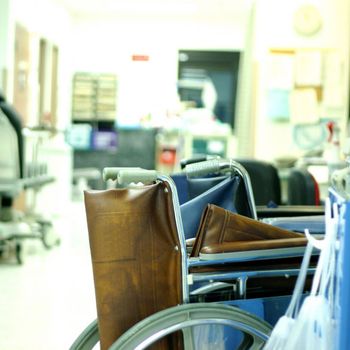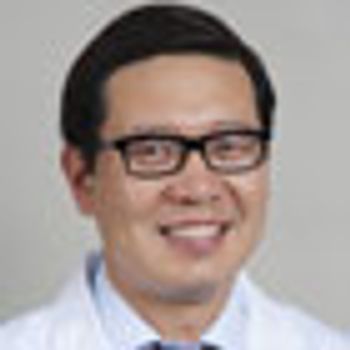
Post-operative ileus, or instinal blockages, in patients with cancer may be prevented by chewing gum, according to a study presented at the 2017 ONS Annual Congress.

Post-operative ileus, or instinal blockages, in patients with cancer may be prevented by chewing gum, according to a study presented at the 2017 ONS Annual Congress.

At the 2017 ONS Annual Congress, CURE held its Extraordinary Healer Award. This years winner is nurse Sara Sargente.

The coping mechanism of mindfulness can be an effective technique in complementary or integrative therapies for patients with cancer, such as meditation, yoga, and reiki.

With their "Be the Guy" compaign, the stem cell donor registry Be the Match is encouraging healthy young men to register as a donor.

For partners of younger patients with breast cancer, coping strategies can affect their anxiety even after treatment.

Carly O’Brien, caregiver program coordinator for CancerCare, dicusses some of the best tips and resources to deal with some of the challenges of head and neck cancer.

Immunotherapy agents are drastically changing the treatment landscape – and outcomes – of patients with head and neck cancers.

A recent study found that young women with breast cancer who are BRCA-positive have similar, or better, outcomes than those who do not, and that preventative bilateral mastectomy in this population does not improve the risk for recurrence or death.

The National LGBT Cancer Network is making cancer screenings more available to a high-risk, underserved population.

With a donation to Teen Cancer America, people can have the chance to win concert tickets to see music legends at Coachella, thanks to a contest the organization is hosting to raise money for young people battling cancer.

At 23, Lindsay Kahn when she was diagnosed with stage 2 refractory Hodgkin lymphoma. Kahn describes the site IHadCancer.com as a “safe haven,” and says it’s a staple of her daily experience.

Intercom announcements, bright lights, nurses bustling in and out of rooms—faced with these disturbances in a hospital, any patient would likely get a terrible night’s sleep.

The possibility that hospitalized cancer patients will fall is an ongoing concern among the medical professionals who care for them.

When chemotherapy involves tricky infusion timing, patients are routinely admitted to hospitals to receive their treatments. But what would happen if these drugs could be administered successfully on an outpatient basis?

Lots of people take their work home with them, but Lynne Malestic, RN, has given the idea new meaning.

Group Health Research Institute in Seattle, Washington, has created an online tool for oncology professionals that lists prices for the 50 most commonly prescribed cancer treatment regimens.

The kinase inhibitor Ibrutinib (Imbruvica) is a more effective frontline therapy than the traditional chemotherapy chlorambucil in treating older treatment-naïve patients with chronic lymphocytic leukemia (CLL) or small lymphocytic lymphoma (SLL), reducing the risk of death by 84%.

Findings from an analysis of more than 34,000 participants in the Childhood Cancer Survivor Study show that among those who have survived at least 5 years, all-cause mortality at 15 years after diagnosis dropped by half from 12.4% to 6%.

Imagine a woman with a weight problem who, two weeks after chemotherapy, goes to her doctor with a urinary tract infection and a rash on her upper chest.

The concerns a family might have when a loved one develops squamous cell carcinoma of the oral cavity might seem obvious: fear that the patient will have a shorter life due to advanced disease, empathy for her pain, and a feeling of isolation in facing a rare presentation of cancer.

In a moving ceremony that drew tears from many in a crowd of nearly 1000, one outstanding nurse was recognized last night with CURE magazine's 2015 Extraordinary Healer Award for Oncology Nursing.

With the use of MRI imaging to restrict doses to erectile tissues, nearly half of men treated with external beam radiation therapy (EBRT) for prostate cancer were able to be sexually active without aids or medications 5 years later, and nearly 80% could be sexually active if such support was an option

Men diagnosed with prostate cancer after being diagnosed with depression were less likely to undergo definitive treatment for their cancer and had worse overall survival

When the US Preventive Services Task Force (USPSTF) recommended last year that asymptomatic, high-risk individuals should receive annual screening for lung cancer with low-dose computed tomography (LDCT), it made a healthy decision for the American population.

Androgen-deprivation therapy (ADT) is a mainstay of treatment for prostate cancer in a number of settings, so managing its side effects is becoming increasingly important for urologists and oncology practitioners in collaboration with primary care physicians.

A new study presented at the 2014 ASCO Annual Meeting has found that adding goserelin to chemotherapy for women with early-stage hormone receptor (HR)-negative breast cancer helps both to preserve their fertility and to prolong their survival.

The electrolyte disorder hyponatremia is a common and dangerous problem among cancer patients, and vaptans designed to help bring body fluid and sodium back into balance can be useful for some patients

Men who experience hot flashes because they are undergoing androgendeprivation therapy for prostate cancer are not significantly helped by two treatments that alleviate the same symptom in menopausal women, the results of a study show.

A grant from a pharmaceutical company is translating into a win for both the University Medical Center of Princeton at Plainsboro and its patients with cancer.

More and more, as the use of maintenance therapy increases, oncology nurses are tasked with monitoring how the strategy is working for specific patients.